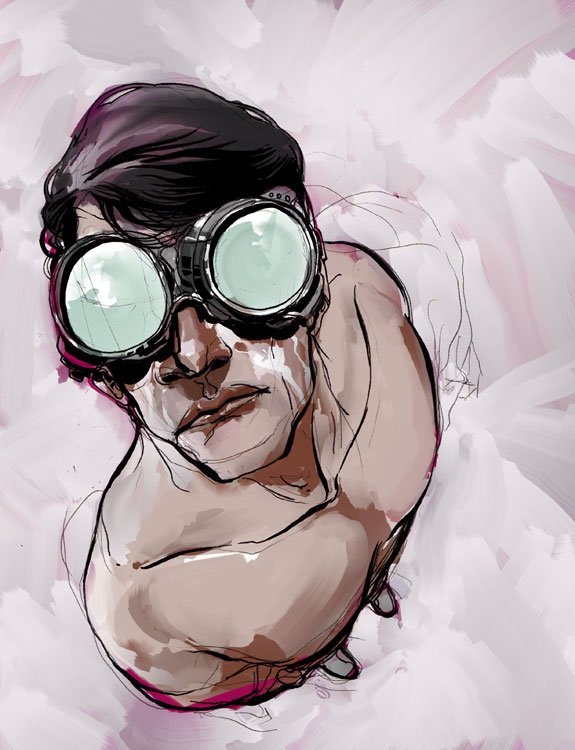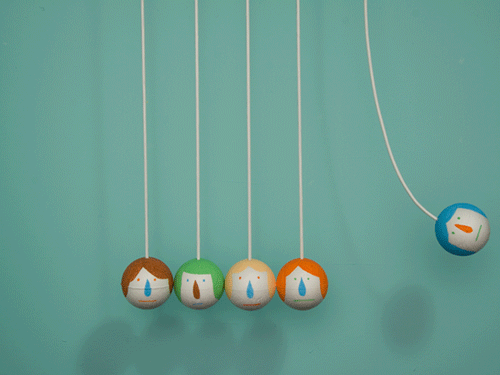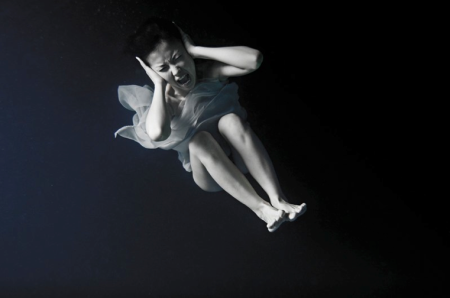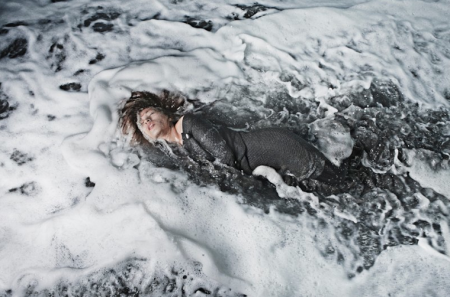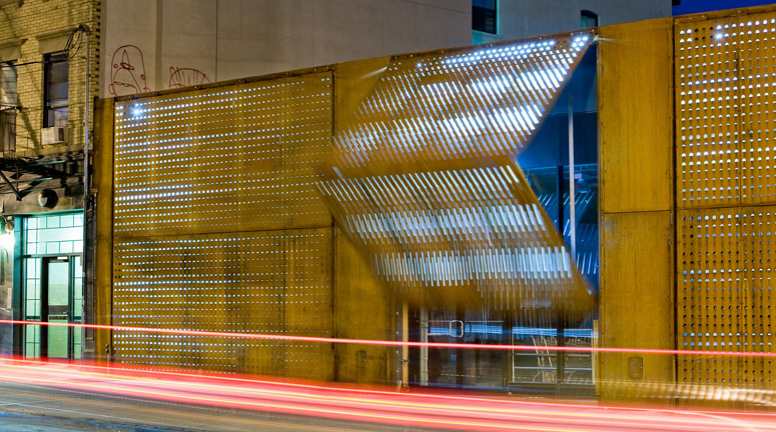“A Game of Fashion And Architecture” – a short film by KAPLINSKI
Posted by R U M T O S S E T in MODE on november 2, 2013

KAPLINSKI Film still, Courtesy of Benjamin Seroussi.
What happens when you bring architecture and fashion film together? The answer could simply be:KAPLINSKI, the title of a recent short film created by filmmaker Benjamin Seroussi (known for his videos for Louis Vuitton, Maison Martin Margiela, Lacoste, Nowness, and others) in collaboration with David Tajchman (an award-winning architect based in Paris, France). The film explores the ways an architect and a filmmaker can complement each other, featuring architectural structures made of children’s wooden building blocks. Sometimes a prison, sometimes a garment, the structures envelop the bodies of the models, before they inevitably fall apart when touched, turning the film into an artistic dialogue between the rigidity of architecture and the fluid movement of the body.

KAPLINSKI Film still, Courtesy of Benjamin Seroussi.
KAPLINSKI introduces models Marie Meyer and Caroline de Maigret, as well as musical artist Benjamin Clementine. The soundtrack was composed and performed by Dougy Mandagi and Toby Dundas, members of Australian band The Temper Trap.
The name KAPLINSKI is a combination of the name Kapla (the brand of wooden bricks Seroussi used to play with as a child) and the suffix –inski. The creators of the video made up this name as a reference to Constructivism (an early-20th-century art movement which emerged in Russia), which inspired both the photography and aesthetic of the film.
KAPLINSKI
Filmmaker: Benjamin Seroussi.
Art direction: David Tajchman.
Executive producer: Eric Buisson.
Director of photography: Martin de Chabaneix.
Design team: David Tajchman, Julie soulat Ahnberg, Sarah Delaunay, Amanda Dutrieux, Yan Bonnevialle, Alya el Chiati, Vlad Daraban.
Release year: october 2013.
Location: Paris, France.

KAPLINSKI Film still, Courtesy of Benjamin Seroussi.

KAPLINSKI Film still, Courtesy of Benjamin Seroussi.

KAPLINSKI Film still, Courtesy of Benjamin Seroussi.
sources:
Origami Portraits
Posted by R U M T O S S E T in MODE on november 2, 2013

photo © Giacomo Favilla.
The mask is an object found in almost every culture in the world. While in the West it has lost most of its symbolism and ritualistic significance, in other societies it still retains a powerful aura: shamans wear animal masks during rituals to invoke the spirits; warriors wear lion masks to gain strength and courage. But what happens when, in a gesture that transcends cultures and traditions, modern-day urbanites don animal masks that have been made using the traditional origami technique?

photo © Giacomo Favilla.
Fashion photographer Giacomo Favilla and designer-origamist Francesca Lombardi’s recent collaboration is full of some very subtle and delicate meanings. Titled ‘‘One of Us’’, the project consists of black and white portraits of people sitting in a vintage armchair, while wearing beautiful origami masks. With the intention creating an impression of an imaginary world, where animal and human natures blend together as one, each mask has been laboriously folded over and over again to resemble a different animal. Be the animal a puma, a rabbit, a crocodile or a cat – they all take their turn in ‘‘being the face,’’ be that temporarily, of a person sitting to have their photo taken where their most striking feature is the fact that they have no eyes – they are in fact stylised blindfolds in the shape of animals.
The project ‘‘One of Us’’’ will be presented as an exhibition, along with more work from the same two artists, from 28 November 2013 to 16 February 2014, at The Book Club, 100-106 Leonard Street, Shoreditch, London, EC2A 4RH.

Puma Origami mask folded by Francesca Lombardi, designed by Roman Diaz.
photo © Giacomo Favilla.

origamist:photo © Giacomo Favilla.

photo © Giacomo Favilla.

photo © Giacomo Favilla.

photo © Giacomo Favilla.
INTERACTIVE MIRRORS
Posted by R U M T O S S E T in DIGITALKUNST on oktober 31, 2013
New York-based artist Daniel Rozin creates interactive installations and sculptures that have the ability to change and respond to the presence of a viewer. His best known works respond in real time and recreate a live visual representation of the viewer’s likeness, staging the audience as an active and creative part of his art projects. Grounded in gestures of the body, the mirror is a central theme of Rozin’s practice. In his art, surface transformation becomes a means to explore animated behavior, representation, and illusion. Visual structures such as that of haystacks, woven fabric, stone mosaics, the pixel, and particulate accumulations are among the many influences and diverse textures evoked by his installations.








All images © Daniel Rozin

